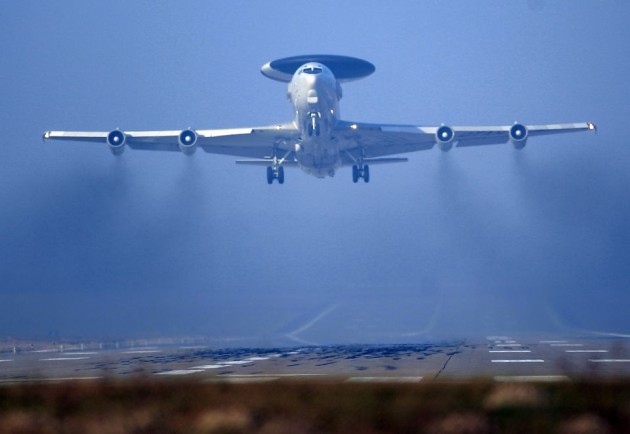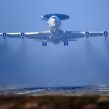
Russia, the West, and the Security Vacuum in Europe’s East (Part Two)
Publication: Eurasia Daily Monitor Volume: 11 Issue: 66
By:

The crisis over Crimea has confirmed and further developed a paradigm of Russian re-expansion and Western self-denial in Europe’s East. This paradigm operates as follows (continued from Part One, EDM, April 4):
5. Europe’s East consigned to Grey Zone. The United States, the European Union and the North Atlantic Treaty Organization (NATO) made strategic decisions during the 1990s to entrust the Organization for Security and Cooperation in Europe (OSCE) with handling the “frozen conflicts.” A political body, in no way equipped for a security actor’s role, the OSCE is hostage to Russia’s statutory veto power within the organization. These arrangements, along with Russia’s quasi-monopoly on “peacekeeping” (conceded by NATO—see EDM, April 4), amounted to relegating Europe’s East to an insecure “grey zone” between the institutional West (NATO/EU) and Russia. Within this zone, countries adopting a pro-Western orientation risked being attacked by Russia with impunity and losing territory to Russia, or to its proxies. The Western powers never developed a strategy or any kind of countermeasures to protect their partners (Georgia, Azerbaijan, Moldova and most recently Ukraine) from Russia’s reprisals. By now, many in the EU and NATO argue that the “frozen conflicts” disqualify such countries from affiliation with the Euro-Atlantic community, thus consigning them once more to the insecure “grey zone.” Given the new Ukrainian government’s European aspirations, the EU considered sending an EU observer mission to Ukraine. However, Germany insisted and prevailed that an OSCE mission be dispatched instead, after negotiating its mandate with Moscow (kremlin.ru, March 23; OSCE press release, March 23).
6. Utopian beliefs obnubilate threat assessments. Addressing the recent US-EU summit in Brussels, President Barack Obama remarked, “Russia’s leadership is challenging truths that only a few weeks ago seemed self-evident, that in the 21st century, the borders of Europe cannot be redrawn with force” (White House Press release, March 26). Invoking the “21st century” as an end-of-history age that should make Russian aggression inconceivable has become commonplace among top US officials and even NATO leaders. In its fully developed form, this adage says that Russia cannot pursue a 19th century–style sphere of influence in the 21st century (often bracketing out the 20th century for unclear reasons). Western officials displayed this post-modern form of self-deception in the run-up to Russia’s 2008 invasion of Georgia. Stunned by that event, Western leaders described it as a “watershed” and a “wake-up call” to re-assess policy toward Russia. Yet no re-assessment ensued. Almost six years later, the next cohort of NATO leaders felt stunned by Russia’s invasion of Crimea, another presumed historical anachronism.
7. Economic sanctions rendered unusable. US and European leaders have generally ruled out economic sanctions over Russia’s seizure of Crimea, unless Russian forces move into mainland Ukraine—a scenario that Moscow will do its utmost to avoid. European countries variously invoke economic “inter-dependence” with Russia, or over-dependence on Russian energy supplies, or anti-crisis projects financed by Russia in Europe (e.g., the Mistral warships in France) in opposing economic sanctions. At the height of the crisis over Ukraine, the German government cleared the sale of crisis-hit oil and gas company RWE Dea to Kremlin-approved Russian oligarchs (RWE press releases, March 17, 28) and the takeover of additional gas storage capacities in Germany by Russian Gazprom (Deutsche Welle, March 18; Die Welt, March 12, 26). Russian President Vladimir Putin’s grand design for a “Greater Europe” economic space, still a long way from fruition, seems already to disable economic sanctions as a policy instrument in Europe.
8. Russian territorial seizures cemented. According to Russian officials, most recently Moscow’s ambassador to NATO Aleksandr Grushko (Interfax, April 2), countries wishing to join NATO or the EU should expect that the new dividing line would not run along their border with Russia, but rather within those countries themselves—i.e., loss of territory to Russia or its proxies. The West has responded by refusing to recognize forcible territorial changes in Georgia, Moldova or most recently Ukraine, upholding those countries’ territorial integrity and internationally recognized borders in principle, but it is unable to uphold them in practice. In Crimea’s case, as Polish Prime Minister Donald Tusk sums up, “all or almost all countries have acknowledged the force of [accomplished] facts, but have not accepted them from the legal point of view. It is possible to acknowledge the facts without recognizing their legality” (Ukrinform, March 25). Meanwhile, the onus shifts on the targeted countries to prove that they are fully committed to “peacefully negotiated, diplomatic solutions,” although the existing negotiating formats remain frozen.
NATO and the EU are in the process of formulating their responses to Russia’s assault on Ukraine. Any reassessment of policy would need to encompass Moldova, Georgia and Azerbaijan. Partnerships would turn out ultimately unworkable and potentially risky to these countries, as long as they remain wide open to Russian threats of force and seizure of parts of their territories.




